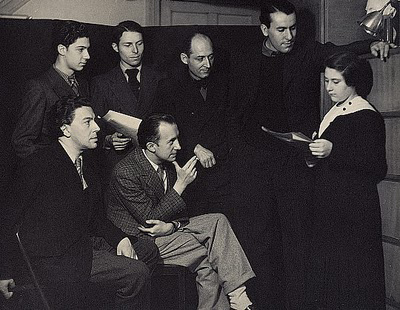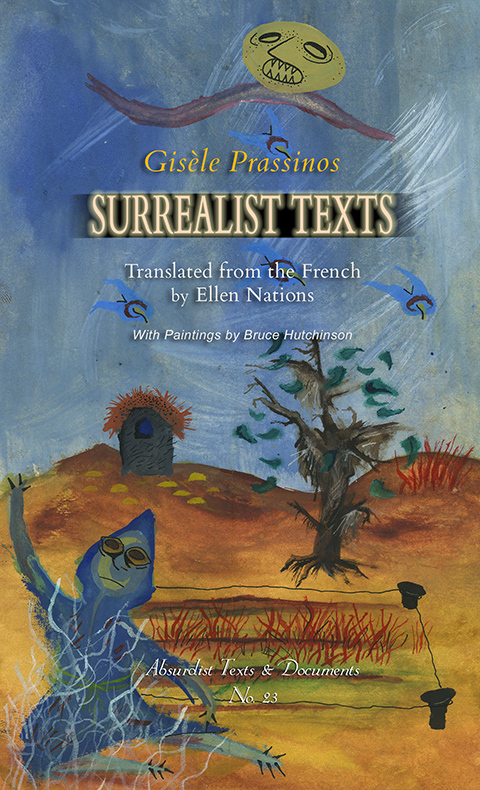 |
| http://www.manchestergalleries.org/angelsofanarchy/resources/artists/index.html, |
Angels was the first major exhibition in Europe to explore the crucial role that women artists played in the surrealist art movement and featured over 150 artworks, including paintings, photography, sculpture and surreal objects, created by three generations of artists from around the globe.
The 32 artists are some of the most important and influential artists of the 20th century, including Frida Kahlo, Lee Miller, Meret Oppenheim and Leonora Carrington. These were radical, revolutionary women whose work still inspires, and sometimes shocks, today.
Since then, I have been interested in tracking down other female surrealist artists and writers, and recently I came across Gisèle Prassinos. She is a writer of novels, stories and poems and she also creates objects - particularly in fabric (I can't find any examples on-line, but if anyone does, please post as if they're anything like her stories,I would love to see them) .
“I never knew how to write a realistic story. I never knew how to draw or to write life as it is. Each line, each word distracts me and pulls me towards the impossible,” writes Gisèle Prassinos in her semi-autobiographical novel Time is Nothing (Le Temps n’est rien).
. |
Gisèle Prassinos reads to the surrealists. Photo by Man Ray
|
She was adopted into Andre Breton's surrealist group age 14 as the embodiment of the “femme-enfant.” She had no knowledge of surrealist practice of automatism, but wrote ecstatic literature from her unconscious and continued to produce stories, novels and poems long after her association with Surrealism had ended, proving her true importance as an independent artist. What the Surrealists took for a juvenile ease in exposing the unconscious was actually the first sign of a burgeoning literary talent.
 |
Born in 1920 into what had been a wealthy and cultured Greek family which was forced to move to France to avoid persecution during hostilities between Greece and Turkey when Gisèle was only two (her father had to sell his library of 100,000 books to pay for the journey), she grew up in a difficult but stimulating environment that is reflected in her work.
She released her first book La Sauterelle Arthritique (The Arthritic Grasshopper) in 1935, supported by Paul Eluard’s preface and the photograph, above, by Man Ray. Holding her own among the formidable male personalities of the surrealist group, she was one of two female writers included in Breton’s 1940 Anthologie de l’humour noir.
What makes her writing fascinating is its intense association with the worlds of dream and myth. The construction of many of her stories leave the reader with the feeling of just emerging from a nightmare. Others incorporate the enduring themes and structures of myth, allowing her to create a personal Surrealist mythology.
There are frequently strange lapses in logic that the reader must simply accept as reasonable in Prassinos’s fictional worlds, such as in “Arrogant Hair”:
In the meantime, someone, no doubt, came in. It could be a little girl because I heard her teeth crack the shell of a nut…She looked at me, then, pointing her yellowish hands to the first child, said to me: ‘His hair must be smelly because I have found a small woodchip on the floor’.
The narrator assumes the entrant is a little girl because, apparently, little girls crack nuts with their teeth. Woodchips are indicative of bad smelling hair, and, even more strange, although the smelly hair seems to permeate the entire room, the girl is only made aware of its smell by a visual input. The short stories in this collection often concern children, or are written from a childlike point of view, from which this sort of imaginative logic might seem perfectly reasonable.
Now, Black Scat Books, a small publishing venture dedicated to “sublime art and literature,” offers the first comprehensive selection of Prassinos’s neglected surrealist texts to appear in English.
|
|
Gisele Prassinos
for the speech of early morning
and its muscular taste of rebirth
even if daylight arriving should choke it
I would open the flowers of poison unaided
and let the last day dawn
I function, fertile
uselessly repeat
cannot offer oblivion
its gone way beyond tears
where are the flowery phrases of yesteryear?
for the speech of early morning
and its muscular taste of rebirth
even if daylight arriving should choke it
I would open the flowers of poison unaided
and let the last day dawn
I function, fertile
uselessly repeat
cannot offer oblivion
its gone way beyond tears
where are the flowery phrases of yesteryear?












